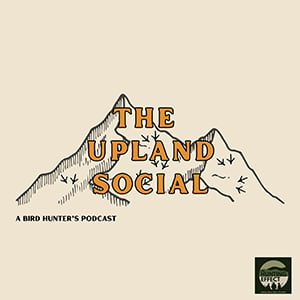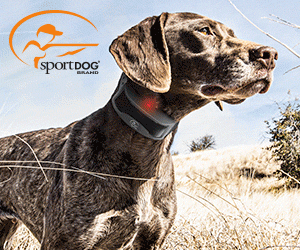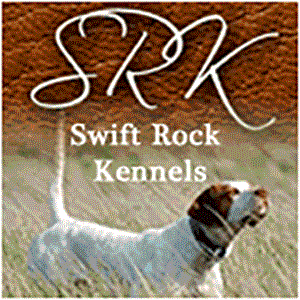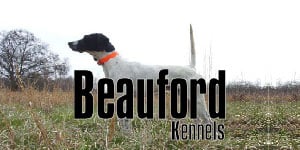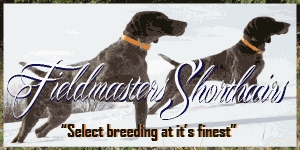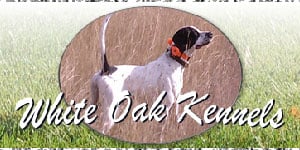Don’t Lose Your Birds
It is quite understandable that a bird hunter’s mind and thought “Where will the bird land?” is probably done seconds after raising the shotgun, picking out a particular bird, and pulling the trigger. This self-question is important in locating the downed bird. If shooting in relatively open areas without many distractions (tall grass, plum thickets, trees, etc.), in theory it will be easier to find those shot birds. Where it can become challenging is when birds land in the middle of a blackberry patch, cholla cactus, or thorny thicket. If using a dog, it most likely will retrieve the bird, but if not the prospect of a hunter coming up with the bird is difficult. Bird hunters will surface like they have been through a shredder. It doesn’t help that most upland gamebird species have an intricate patterning of feathers that allows them to visually disappear right in front of the eyes of hunters. Nature provided these birds camouflage like no other.
Another aspect in finding downed birds is when cripples are involved. Areas with sparse or bare vegetation will be easier for the hunter to visually follow up and find cripples. Wing shooters need to remember that cripples will eventually fly or run to the nearest, nastiest cover to evade both dogs and hunters. Trying to answer the question of where birds will land all the while little brown and gray missiles are flying every which way is not an easy task. Whether hunting long-tail roosters or prairie grouse, and every other type of upland bird, by asking where the bird “may” fall, will help improve recovery rates.
A second rule to follow is to mark your bird. Through some simple steps, hunters can improve their marking abilities. Once the trigger is pulled, hunters should ask themselves a series of questions: Is the bird dead? If the bird is still alive, shoot at it again. If the bird hits the ground, DO NOT take your eyes off it. Avoid the temptation of taking another shot at another bird. This is easier said than done. The thrill of the moment will overwhelm most excited bird hunters and shots will ring out at additional birds flying by.
The chance for scoring a “double” is always enticing. Hunters should ask themselves; Is the bird positively dead and is it well marked? If hunters can answer yes to both questions, then the choice becomes whether to attempt another shot at another bird or retrieve the downed bird. Sometimes the wisest choice is ignored, and hunters give in to flurry of feathers.
Hunters should make note of where they are standing in relation to where they observed the bird fall. This will come in handy when the need to replay the scenario again. The location will be a hunter’s reference point for the duration of the search. Mark it with an orange cap, vest, or marking tape. Better yet, you guide your hunting partner to the location where you saw the bird fall. Once the search begins, it is astonishing how quickly surroundings can change. A bush or tree that wasn’t there when you marked it suddenly appears.
Another important reminder hunters should remember is a bird that falls to the ground can hit the dirt running. These crippled birds can disappear quickly. It is amazing how often a “stone dead” pheasant rooster crash lands to the ground, can suddenly be revived and sprints to the nearest clump of grass and magically disappears.
If you are not sure where the bird went down, begin your search by looking near to far.
Once the search starts, hunters should employ their senses and the ability to look for clues to help in the retrieval of downed birds. Eyes should be trained to the direction of the shot. Look immediately for feathers floating in the breeze. Read the direction of the wind. Are feathers blowing in from left to right or vice versa? Once this is determined, use the direction that the bird was shot from and then hunters should align themselves to the direction of drifting feathers with a landmark. Use a tall tree or bush for a marker.

Other clues that can be used to help in locating shot birds are shotgun wads, blood, and even tracks. Tracks can be tricky as they could be old. But taking the time to determine if tracks are fresh could point the hunter in the direction the bird high-tailed it out the area or if it was wounded and able to run. Tracks in mud, snow, or dirt can yield important evidence that can help hunters.
A hunter’s eyes are crucial in finding birds, but don’t forget about sound. Listen for wingbeats or a bird thrashing around on the ground. The sound of crashing or moving vegetation may be an indicator that the bird is still able to move or run, and they’re trying to put as much space between them and the hunter and the dogs that may be on their tail.
Don’t forget, birds that are wounded WILL hunker down. No matter the size of the upland bird, whether it be a large bird such as a sage grouse or pheasant or a smaller bird such as quail or even doves, they will borrow themselves into and under practically anything. Be it windblown corn, milo, or sunflower stalks, holes, animal dens, bushes, or snow. And let us not forget those places that we would never think a bird would be able to hide successfully; patches or tufts of grass that couldn’t hide a field mouse.
When all else fails, hunters need to look up. Hunters should retrace their steps to the point of where the initial shot was taken, all the while scanning the trees and bushes from eye level up. Personally, I have retrieved one duck and a pheasant that had been caught in branches.
As hunters, we are responsible for making a reasonable effort to retrieve all game that is killed or crippled. We are bound by a certain code of hunting ethics and regulations to not wantonly waste a wild animal that has been mortally wounded or killed while hunting. Game should not be left in the field needlessly wasted without attempts to render it for consumption or other use. Hunters hold a moral obligation to the natural resources that we enjoy taking from so freely. Harvested game should be utilized and taken care of. Those that do not follow the laws and ethical side of hunting should have no business participating in the outdoor traditions hunters and outdoorsmen cherish.
This same philosophy of adhering to respecting the game we hunt needs to be embedded into the youth and new hunters and fishermen. It’s important for them to understand the value of each and every creature that is harvested.
Related Aritlces
WHAT TO WEAR? THAT IS THE QUESTION.
What do I wear for bird hunting? Is a valid and common question asked by new bird hunters. The answers they receive will be on both sides of the spectrum. From the very basic to high-tech. Comfort and protection are paramount when hunting the uplands, as they can be versatile in every aspect of the hunt. There’s a style to the upland ruggedness we hunt. What bird hunters wear must allow them to walk comfortably and if need be, crash through heavy and unruly thickets, brambles, thick cover, as well as up and over rough terrain in mild to extreme conditions. Wear what makes you comfortable and what you can afford, while still maintaining breathability, warmth, dryness, and durability. These attributes make for upland field excursions more enjoyable when not thinking about whether the clothes on your back will function, so focus can be to putting birds in your bird vest.
Six “Military” Style Methods to Outsmart Late
By now late season roosters have been hunted hard, so they’re more wary. Hardened and experienced, these birds flush at greater distances at the mere sound or sight of danger. Add paranoia and the uncanny ability to become elusive and scarce when things get dicey. Veteran roosters know that slow birds of mind and wing are shot. Taking to the air is the last option as mature birds stay grounded and use their feet instead of wings to escape.






